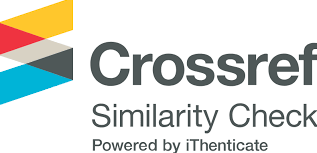Indigenous knowledge using medicinal plants of ethnic minority communities in Chan Son commune, Yen Son district, Tuyen Quang province
Keywords:
Chan Son Commune,, indigenous knowledge, medicinal plantsAbstract
This study was conducted to assess the experience of medicinal plant resources
of Dao and Cao Lan ethnic minority communities in Chan Son commune, Yen
Son district, Tuyen Quang province. The methods used including community
survey, specimen collection, identification of the species name, assessment of
the diversity of medicinal plant resources, assessment of the endangered level of
medicinal plant species. The results of the research have identified initially 123
species of medicinal plants of 113 genera and 69 families which the Dao and
Cao Lan ethnic minority communities have used for diseases prevention and
treatment. There are 7 main life forms of the medicinal plants: herbaceous,
shrubs, vines, small wood trees, large wood trees, moderate wood trees, parasitic
trees, and semi-parasitic trees. Medicinal plants are usually distributed in 4
habitats such as: around the villages, gardens; forest; hills, and riverside. Among
the parts used as medicine, the leaves, stems and whole plants are used the most.
The results show that there are 18 groups of diseases that could be cured by the
experience of using medicinal plants of Dao and Cao Lan ethnic minority
communities in the study area, of which 4 groups of diseases occupy the highest
rate: urinary tract disease, diseases of joints and motor system and tonic. A list of
11 medicinal plant species with conservation value has been identified in the
study area and accounts for 8.94% of the total species
References
1. Bộ Khoa học và Công nghệ, Viện Khoa học và Công nghệ Việt Nam, 2007. Sách Đỏ Việt Nam: phần II Thực vật, NXB Khoa học Tự nhiên và Công nghệ, Hà Nội.
2. Võ Văn Chi, 2012. Từ điển cây thuốc Việt Nam, tập 1 - 2, NXB Hà Nội, Hà Nội.
3. Chính phủ nước cộng hòa xã hội chủ nghĩa Việt Nam, 2019. Nghị định 06/2019/CP-NĐ về quản lý thực vật rừng, động vật rừng nguy cấp, quý hiếm và thực thi Công ước về buôn bán quốc tế các loài động vật, thực vật
hoang dã nguy cấp, Hà Nội.
4. Phạm Hoàng Hộ, 1999. Cây cỏ Việt Nam, NXB Trẻ, Tp. Hồ Chí Minh.
5. Đỗ Tất Lợi, 2005. Những cây thuốc và vị thuốc Việt Nam, NXB Hà Nội.
6. Nguyễn Tập, 2007. Cẩm nang cây thuốc cần bảo vệ ở Việt Nam, Mạng lưới lâm sản ngoài gỗ Việt Nam, Hà Nội.
7. Nguyễn Nghĩa Thìn, 1997. Cẩm nang nghiên cứu đa dạng sinh vật, NXB Nông nghiệp, Hà Nội.
8. Nguyễn Nghĩa Thìn, 2007. Các phương pháp nghiên cứu thực vật, NXB Đại học Quốc gia Hà Nội, Hà Nội.
9. Trung tâm Nghiên cứu Tài nguyên và Môi trường - Đại học Quốc gia Hà Nội và Viện Sinh thái và Tài nguyên sinh vật - Viện Hàn Lâm Việt Nam, 2006. Danh lục các loài thực vật Việt Nam, Nhà xuất bản Nông nghiệp, Hà Nội, tập 2 - 3.
10. Viện Dược Liệu, 1993. Tài Nguyên cây thuốc Việt Nam, NXB Khoa học và Kỹ thuật, Hà Nội.








